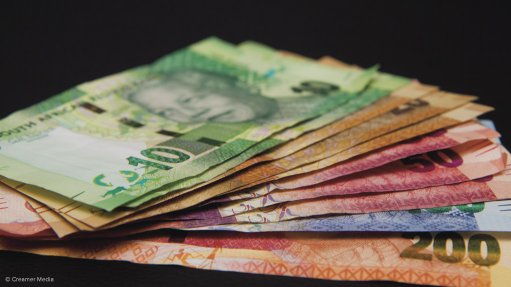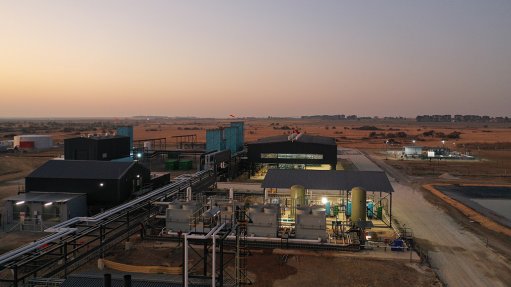SDG achievement will require more data to guide investments – Unctad
The United Nations Conference on Trade and Development (Unctad) has published data revealing that decision-makers urgently need detailed cost estimates to guide their investment and spending choices.
With the world off track to achieve the Sustainable Development Goals (SDGs), Unctad assessed nearly 50 SDG indicators across 90 countries, including 48 developing economies, covering three-quarters of the global population, over the past six months.
Published on September 18 as global leaders met in New York for the UN’s SDG Summit, the data underscores the pressing need for swift and targeted action.
The analysis reveals, for example, that the 48 developing economies assessed face a $ 337-billion-a-year spending gap for indicators related to climate change, biodiversity loss and pollution.
“Merely increasing funds won’t guarantee success. Governments, companies, investors and institutions need to strategically allocate their resources,” Unctad statistics head Anu Peltola said on September 19.
The analysis reveals countries can make the most of their spending by capitalising on synergies among the SDGs. For example, investments in education also advance gender equality, reduce poverty and stimulate innovation for progress across all SDGs.
“This has big implications for economies with limited resources. They don't have to stretch every dollar to cover every goal,” Peltola said.
SIX TRANSFORMATIVE PATHWAYS
The analysis focuses on six transformative pathways for sustainable development – social protection and decent jobs, education transformation, food systems, climate change, biodiversity loss and pollution, energy transition and inclusive digitalisation.
It covers indicators ranging from reducing greenhouse gas emissions and increasing protected forest cover to ensuring universal access to electricity and the Internet, promoting literacy, combating hunger and reducing preventable deaths.
The study also estimates the cost of achieving gender equality for certain indicators related to ending poverty and hunger and empowering women.
Costs range from $5.4-trillion to $6.4-trillion a year from 2023 to 2030, depending on the pathway. This translates to between $1 179 and $1 383 per person each year.
When expanded to cover all developing economies, using the median per-capita cost for the 48 economies in the study, the total yearly needs fall to between $6.9-trillion and $7.6-trillion.
Gender equality and food systems command the highest costs, while the social protection and jobs pathway is the least expensive, even though it covers a wide range of critical targets.
About 80% of the total spending is anticipated to occur in the study’s upper-middle and high-income developing countries. This demographic typically faces the highest per-person yearly costs and largest financing gaps, according to Unctad.
For example, their shortfall in the energy transition pathway accounts for a staggering 98% of the gap across the 48 developing economies.
Small island developing States also face high per-capita costs. Their projected spending requirements for gender equality, for example, stands at $3 724 per person, which is nearly triple the average.
While the least developed countries (LDCs) in the study face much lower per-person costs, the required spending as a share of their gross domestic product (GDP) surpasses 40% for all the pathways, reaching 47% for education.
PLUG SPENDING GAPS, TACKLE DEBT CRISIS
The calculations reveal substantial gaps in the current spending trajectory. The largest shortfall is in inclusive digitalisation, at $468-billion a year. Covering this gap would require a 9% increase in yearly spending.
Conversely, the social protection and decent jobs pathway shows the smallest gap, at $294-billion, requiring a 6% boost in yearly spending.
The calculations use SDG indicators and other official statistics. The study analyses government expenditure, highlighting gaps that can be filled either from more public spending or external sources like foreign direct investments, official development assistance, remittances or external loans.
Unctad’s analysis also underlines the critical need to tackle the global debt crisis. About 3.3-billion people live in countries that spend more on debt interest payments than on essential public services such as education and health.
OPPORTUNITY WINDOW
However, Unctad pointed out that the data also underlines opportunities. For example, swift global action to plug the financing gap in gender equality could enable most of the 48 developing economies to meet over 60% of the gender equality indicators in the study.
“We’re not talking about an exorbitant amount of finance needed to fill the gender equality gap,” said Unctad statistician Nour Barnat.
The data shows it would cost countries about $78 a person every year to overcome the shortfall of current spending in the 48 developing economies. In the LDCs, the gap to fill is less than $17 a person.
Unctad said that the study reiterates its call to increase the availability of key official statistics on government expenditure and to improve reporting on SDG indicators in all countries.
Such improvements would allow the calculations to cover more countries. For example, because of data constraints, the study could only include nine African countries, covering 20% of the continent’s population.
The estimates aim to support efforts by countries and the global community to finance sustainable development. It forms part of a UN-wide initiative led by Unctad, in partnership with the UN Department of Social Affairs, the UN Development Programme and UN Women, pooling together costing tools and guidelines from several UN entities.
Article Enquiry
Email Article
Save Article
Feedback
To advertise email advertising@creamermedia.co.za or click here
Comments
Announcements
What's On
Subscribe to improve your user experience...
Option 1 (equivalent of R125 a month):
Receive a weekly copy of Creamer Media's Engineering News & Mining Weekly magazine
(print copy for those in South Africa and e-magazine for those outside of South Africa)
Receive daily email newsletters
Access to full search results
Access archive of magazine back copies
Access to Projects in Progress
Access to ONE Research Report of your choice in PDF format
Option 2 (equivalent of R375 a month):
All benefits from Option 1
PLUS
Access to Creamer Media's Research Channel Africa for ALL Research Reports, in PDF format, on various industrial and mining sectors
including Electricity; Water; Energy Transition; Hydrogen; Roads, Rail and Ports; Coal; Gold; Platinum; Battery Metals; etc.
Already a subscriber?
Forgotten your password?
Receive weekly copy of Creamer Media's Engineering News & Mining Weekly magazine (print copy for those in South Africa and e-magazine for those outside of South Africa)
➕
Recieve daily email newsletters
➕
Access to full search results
➕
Access archive of magazine back copies
➕
Access to Projects in Progress
➕
Access to ONE Research Report of your choice in PDF format
RESEARCH CHANNEL AFRICA
R4500 (equivalent of R375 a month)
SUBSCRIBEAll benefits from Option 1
➕
Access to Creamer Media's Research Channel Africa for ALL Research Reports on various industrial and mining sectors, in PDF format, including on:
Electricity
➕
Water
➕
Energy Transition
➕
Hydrogen
➕
Roads, Rail and Ports
➕
Coal
➕
Gold
➕
Platinum
➕
Battery Metals
➕
etc.
Receive all benefits from Option 1 or Option 2 delivered to numerous people at your company
➕
Multiple User names and Passwords for simultaneous log-ins
➕
Intranet integration access to all in your organisation
















